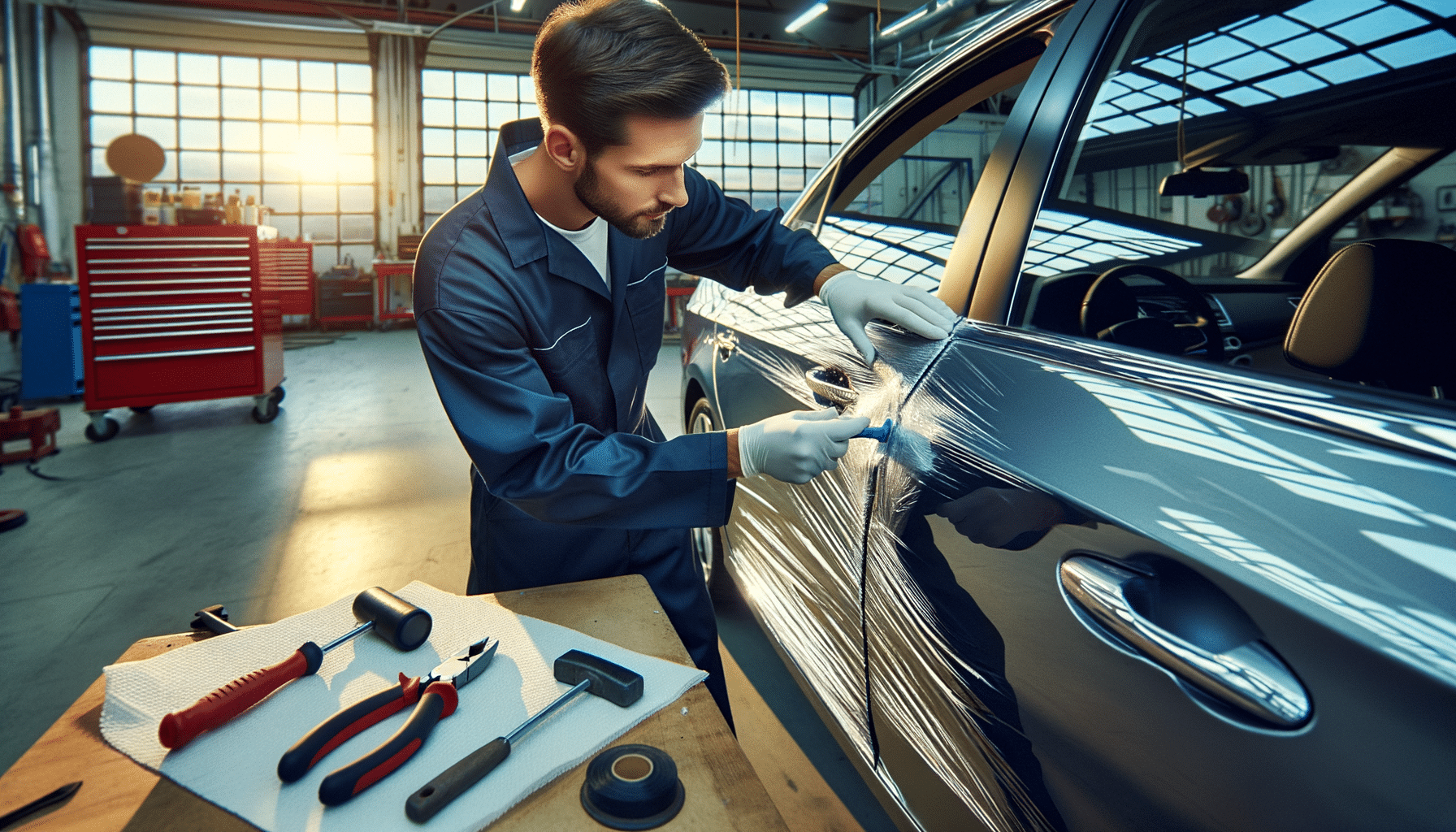
Understanding Paintless Dent Repair Techniques and Benefits
Introduction to Paintless Dent Repair (PDR)
Paintless Dent Repair (PDR) is a technique that has revolutionized the auto repair industry by offering a cost-effective and efficient alternative to traditional dent removal methods. Unlike conventional techniques, which often involve sanding, filling, and repainting, PDR focuses on preserving the vehicle’s original paintwork. This method is particularly beneficial for minor dents and dings caused by hail, door dings, or minor collisions.
The process of PDR involves the use of specialized tools to gently massage the dented area from behind the panel. This meticulous technique allows technicians to restore the vehicle’s surface to its original condition without the need for repainting. As a result, PDR is not only time-saving but also environmentally friendly, as it reduces the use of harmful chemicals and materials associated with traditional auto body repairs.
One of the primary advantages of PDR is its ability to maintain the vehicle’s original factory finish. This is crucial for car owners who wish to preserve the aesthetic appeal and resale value of their vehicles. Moreover, PDR is often less expensive than conventional repair methods, making it an attractive option for those looking to repair minor damages without breaking the bank.
The Essential Tools for Paintless Dent Repair
PDR requires a specific set of tools designed to access and repair dents without damaging the vehicle’s paint. These tools are crucial for technicians to perform precise and effective repairs. Some of the most commonly used PDR tools include:
- Rods and Picks: These are essential for reaching behind panels to push out dents.
- Glue Pullers: Used for pulling out dents when access from behind is not possible.
- Tap Down Tools: These tools help in refining the surface and eliminating high spots.
- Lighting Tools: Proper lighting is crucial for identifying and assessing the extent of the dent.
Each tool serves a specific purpose in the PDR process, and their effective use requires skill and experience. Technicians must be adept at selecting the right tool for each unique dent, as well as applying the appropriate pressure to ensure a seamless repair. The precision and subtlety required in PDR highlight the importance of professional training and expertise in achieving optimal results.
Comparing PDR with Traditional Dent Repair
When considering dent repair options, it’s essential to understand the differences between PDR and traditional methods. Traditional dent repair often involves a more invasive process, including sanding, filling, and repainting the damaged area. This approach can be time-consuming and costly, particularly if the vehicle requires color matching and blending.
In contrast, PDR is a non-invasive method that focuses on restoring the vehicle’s original finish. This technique is ideal for minor dents that have not damaged the paint. PDR is typically faster and more affordable than traditional methods, as it requires fewer materials and labor. Additionally, because PDR does not involve repainting, it eliminates the risk of color mismatch, ensuring that the vehicle maintains its original appearance.
However, it’s important to note that PDR is not suitable for all types of damage. Severe dents, especially those with sharp creases or paint damage, may still require traditional repair methods. In such cases, a combination of both techniques might be necessary to achieve the best results.
Maintaining Your Vehicle with Regular PDR
Regular maintenance is key to preserving the aesthetic and functional value of your vehicle. Incorporating PDR into your maintenance routine can help keep your car looking pristine and protect its resale value. By addressing minor dents and dings promptly, you can prevent further damage and avoid more costly repairs down the line.
PDR is particularly beneficial for vehicles that are frequently exposed to potential sources of damage, such as hailstorms, crowded parking lots, or urban environments. By regularly inspecting your vehicle for minor dents and utilizing PDR services, you can ensure that your car remains in top condition.
Moreover, maintaining a dent-free exterior not only enhances the visual appeal of your vehicle but also reflects positively on your attention to detail and care for your investment. This can be especially important when it comes time to sell or trade in your vehicle, as a well-maintained exterior can significantly boost its market value.
Protecting Your Vehicle’s Paint with PDR
One of the key benefits of PDR is its ability to preserve the vehicle’s original paint finish. This is particularly important for maintaining the integrity and longevity of the paintwork. The original paint is formulated to withstand various environmental factors, such as UV rays, moisture, and temperature fluctuations, which can otherwise lead to fading, peeling, or rusting.
By using PDR, you can avoid the need for additional paintwork, which may not always match the original finish perfectly. This ensures that your vehicle retains its factory appearance and protects it from the potential pitfalls of aftermarket paint jobs. Additionally, the avoidance of sanding and repainting during PDR means there is less environmental impact, as the process reduces the use of solvents and other chemicals.
Furthermore, protecting the original paint is crucial for maintaining the vehicle’s warranty, as aftermarket paint jobs can sometimes void manufacturer warranties. By choosing PDR, you not only protect the aesthetic value of your vehicle but also uphold its warranty and ensure its long-term performance.


